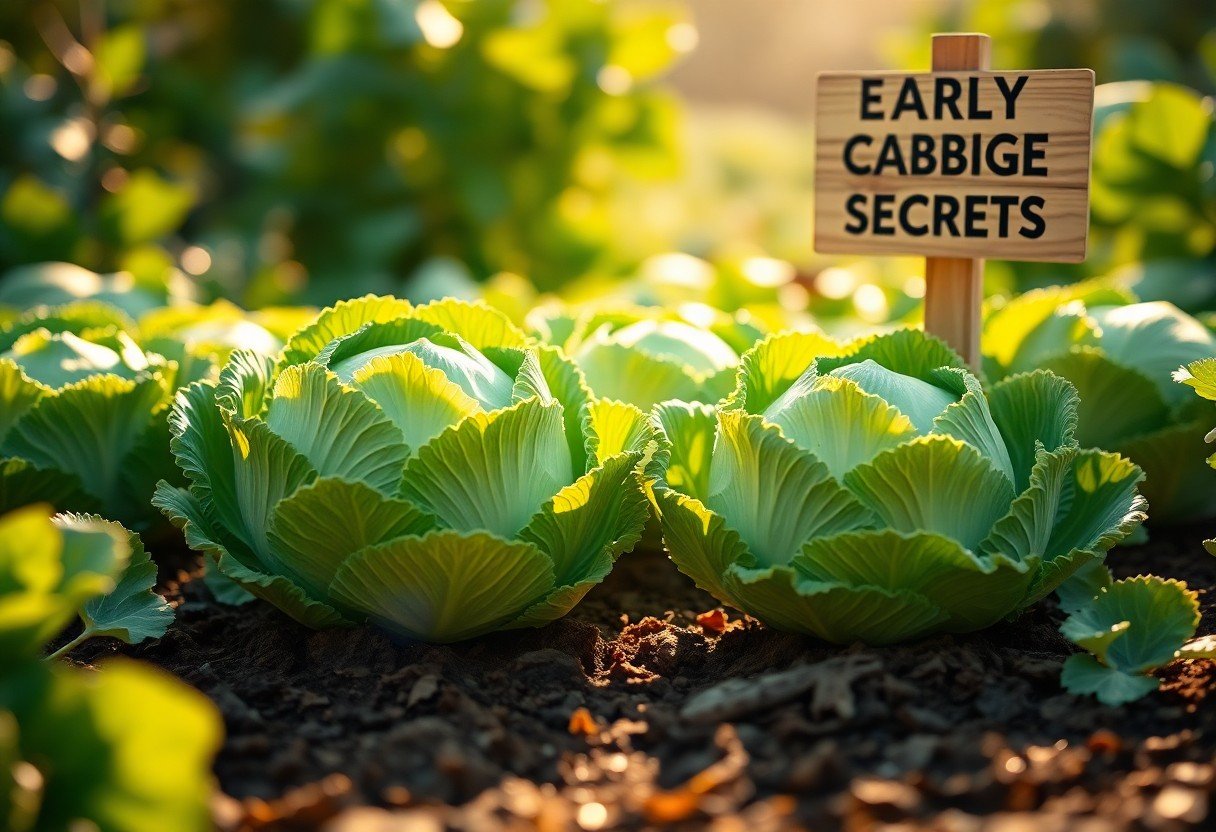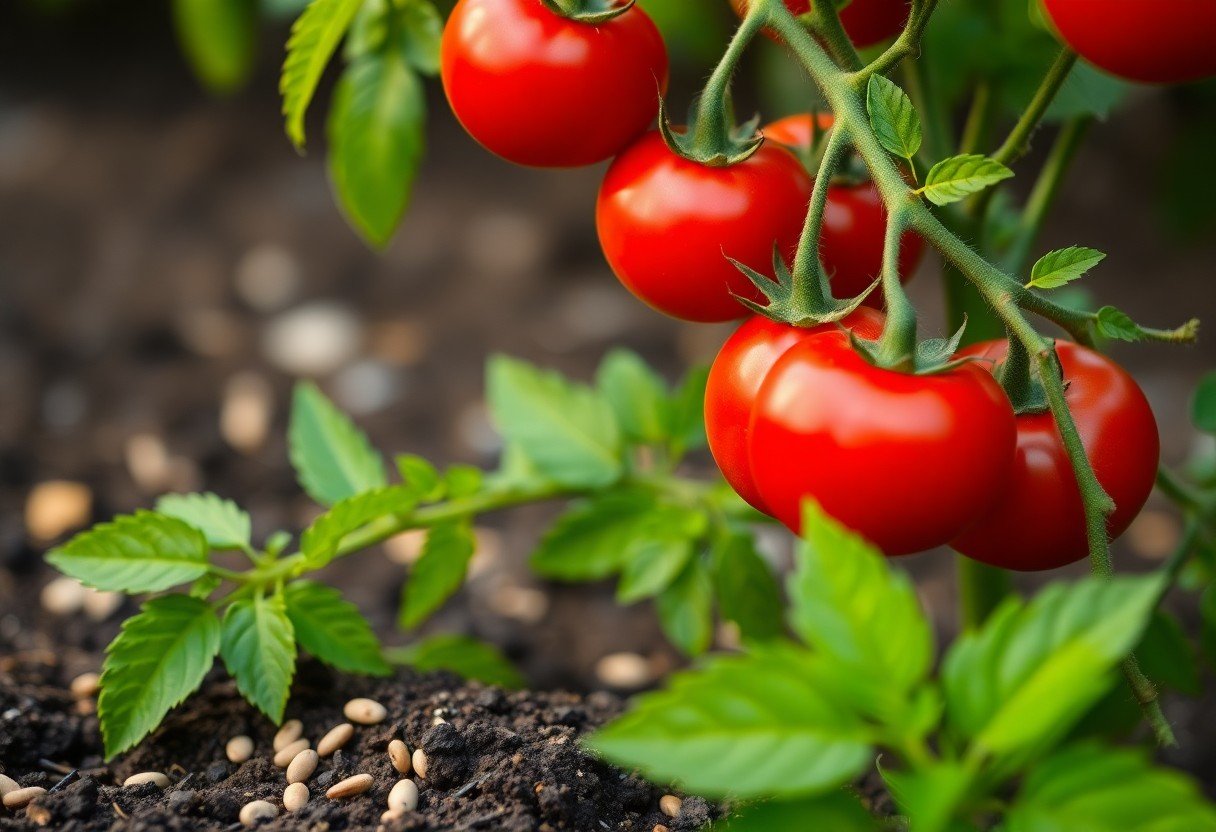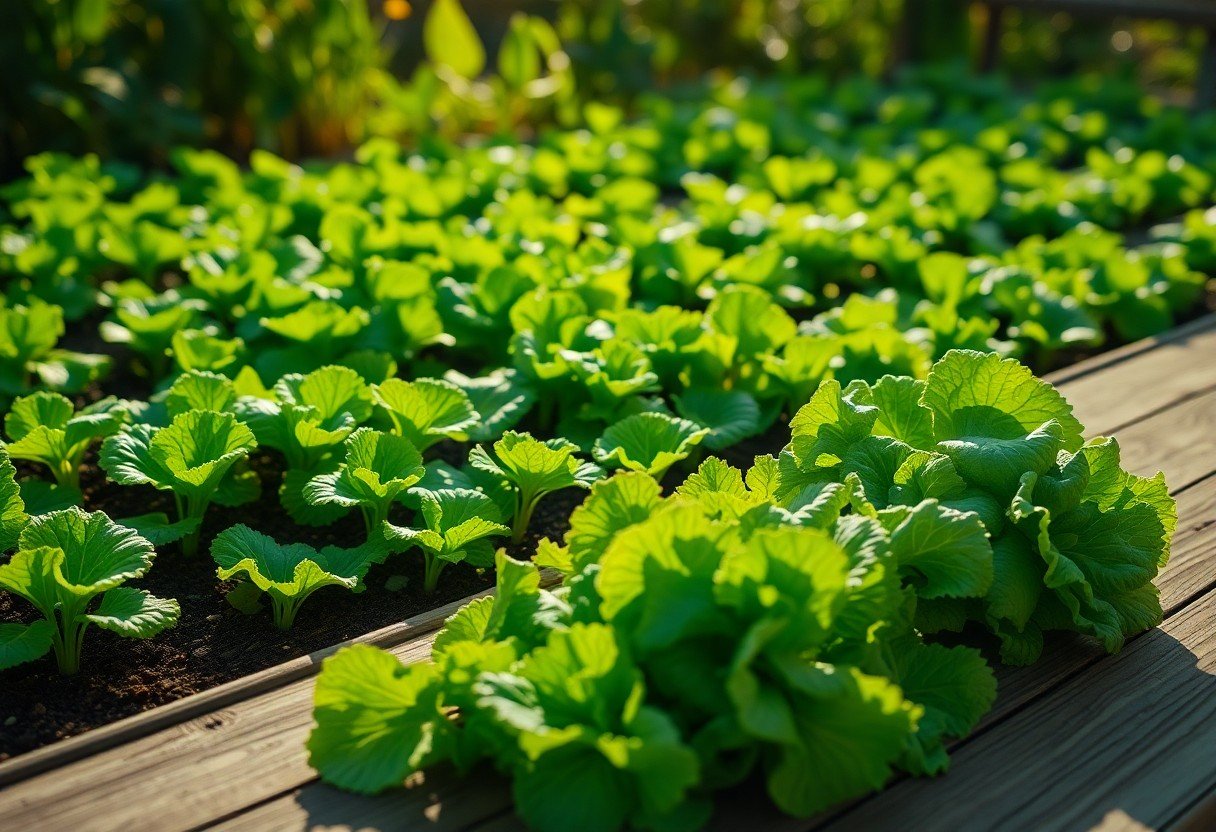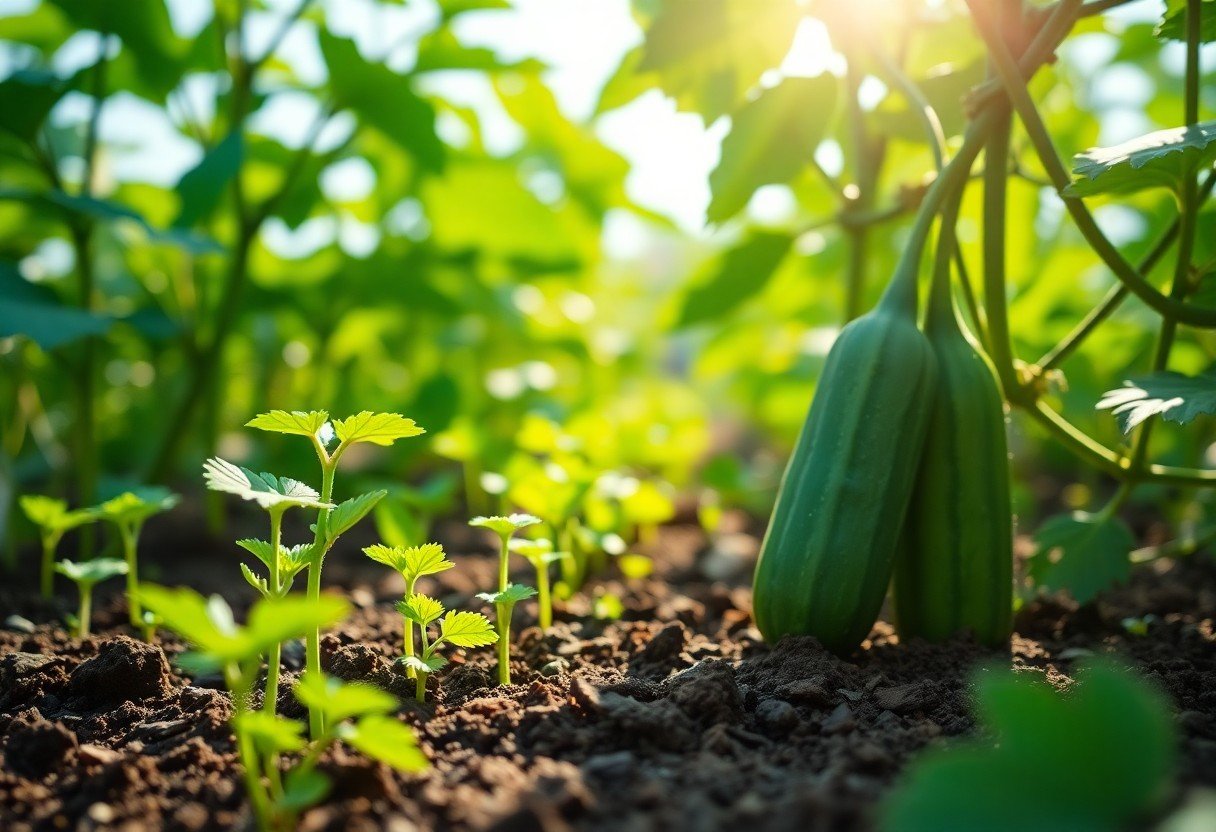Planting and nurturing eggplants can transform your garden into a vibrant display of purple hues and delicious flavors. In this guide, you’ll learn everything you need to cultivate your own eggplant, from selecting the right seeds to caring for your plants as they grow. You’ll discover vital tips for soil preparation, pest management, and harvesting techniques, ensuring your journey from seed to fruit is both rewarding and successful. Whether you’re a seasoned gardener or just starting, this guide will equip you with the knowledge you need for eggplant excellence.
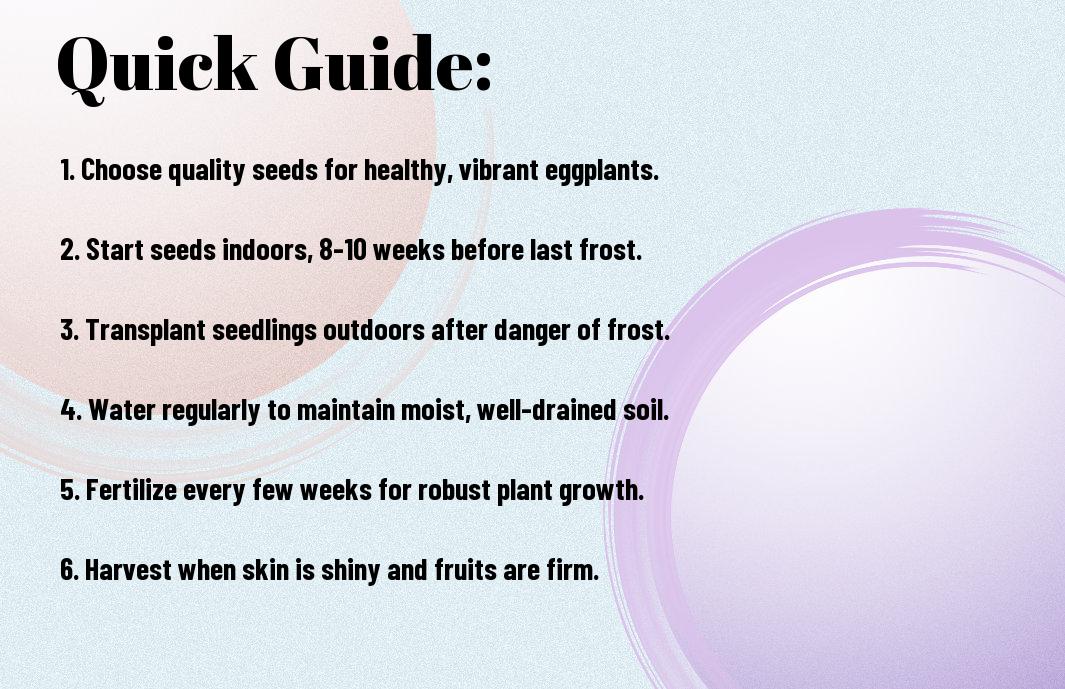
Types of Eggplants
The world of eggplants is diverse, offering a stunning array of colors, shapes, and sizes for you to explore. Whether you’re a beginner or an experienced gardener, knowing the types of eggplants can help you choose the best variety for your garden or culinary experiments. Here’s a breakdown of the common types:
| Type | Description |
| Black Beauty | Known for its deep purple skin and smooth texture. |
| Italian Eggplant | Large, long shapes typically used in Mediterranean dishes. |
| White Eggplant | A creamy, mild option that works well in a variety of recipes. |
| Chinese Eggplant | Thin, elongated, and tender with a sweet flavor. |
| Japanese Eggplant | Small and slender, boasting a delicate taste. |
Any time you decide to grow eggplants, choosing the right type will enhance not just your garden’s aesthetics but also your culinary options. Each type has its unique culinary benefits, offering a delightful experience in your dishes.
Popular Varieties
Assuming you’re ready to initiate on your eggplant-growing journey, focusing on popular varieties will help you yield beautiful fruits. Black Beauty and Italian Eggplant remain favorites due to their reliable growth patterns and versatility in cooking. You may find that these common choices are widely available at local garden centers or nurseries, making them an excellent starting point for your gardening venture.
In addition, varieties like the Chinese and Japanese eggplants offer attributes that can introduce unique flavors into your meals. Their elongated shapes and tender flesh not only make for aesthetic appeal but also promise a delightful taste experience. Selecting a variety that suits your personal preferences is key to enjoying the fruits of your labor in the kitchen.
Unique Characteristics
With numerous eggplant types available to you, understanding their unique characteristics will enrich your gardening experience. Many eggplants vary not just in shape and color but also in flavor profile and texture. For example, while the Italian eggplant is known for its slightly bitter taste, the white eggplant tends to be milder and creamier, offering different cooking possibilities.
Characteristics such as size, skin thickness, and flesh texture can also influence the way you prepare these vegetables. Thinner-skinned varieties, like Chinese eggplants, often cook faster and can be great for quick stir-fries, while thicker-skinned varieties may hold up better in grilling or roasting. As you explore eggplant types, you’ll discover how their unique features can elevate your culinary creations.
Growing Tips
Some key practices can help you achieve a bountiful harvest of eggplants. Start by ensuring your plants are well-nourished, consistently watered, and receive ample sunlight. Here are some tips to keep in mind:
- Use high-quality seeds or seedlings to promote healthy growth.
- Rotate your crops to prevent soil-borne diseases.
- Mulch around your plants to retain moisture and keep weeds at bay.
- Prune the plants to improve air circulation and encourage fruit production.
- Fertilize regularly to supply the necessary nutrients for optimal growth.
Any attention you give to these key factors will significantly enhance your eggplant growing experience and yield.
Optimal Growing Conditions
There’s no denying that eggplants thrive in warm weather, so it’s crucial to plant them when the soil temperature is consistently above 70°F (21°C). They love full sun, so choose a location that receives at least six to eight hours of direct sunlight each day. The soil should be rich and well-drained, ideally with a pH level of 6.0 to 6.8. To aid growth, enrich your soil with compost or a balanced fertilizer before planting.
In addition to temperature and sunlight, you should also consider your watering schedule. Eggplants benefit from consistent moisture, but overwatering can lead to root rot. Water the plants deeply and allow the soil to dry slightly between waterings. This balance will encourage strong root development and support healthy fruit production.
Common Pests and Diseases
Pests can pose a significant threat to your eggplant crop, so it’s important to stay vigilant. Common pests that may target your plants include aphids, spider mites, and the notorious flea beetle. Each of these pests can cause various degrees of damage, from stunting growth to reducing your overall yield. To protect your plants, regularly inspect for signs of infestation, and consider using organic insecticidal soaps to deter unwanted guests.
Growing eggplants also comes with the risk of various diseases. Fungal issues, such as powdery mildew, can emerge in warm and humid conditions, especially if the plants are overcrowded. Bacterial wilt presents another challenge, often caused by contaminated soil. Keeping your plants spaced appropriately, practicing good sanitation, and using resistant varieties whenever possible will help manage these problems effectively.
Step-by-Step Growing Guide
Your journey to cultivating beautiful eggplants begins with a well-structured plan. To guide you through the stages of growing your eggplant from seed to harvest, we’ll break down the process into manageable steps. Understanding each part of this journey is necessary for ensuring your plants thrive and produce the best fruits. The following table will provide you with necessary information on seed selection, germination, transplanting, and care.
| Step | Description |
| 1. Seed Selection | Choose high-quality seeds from a reputable source with desired traits. |
| 2. Germination | Start seeds indoors in seed trays with moistened soil, keeping them warm and well-lit. |
| 3. Transplanting | Move seedlings to larger pots or your garden when they have true leaves. |
| 4. Care | Provide adequate water, sunlight, and nutrients for healthy growth. |
From Seed Selection to Germination
There’s a myriad of choices when it comes to selecting the right eggplant seeds. You’ll want to explore various eggplant varieties, such as Black Beauty, Italian, or Japanese eggplants, based on your culinary preferences and climate suitability. Once you’ve selected your seeds, the next step is germination. You should plant your seeds in seed trays, using a soil mix that retains moisture but also allows for good drainage. Keeping the trays at a consistent temperature between 70°F and 85°F will foster faster germination, and placing them under grow lights for about 14-16 hours a day will help the seedlings thrive.
Transplanting and Care
There’s no shortage of joy in seeing your seedlings sprout, but the next important phase is transplanting them into larger pots or directly into your garden. Once your seedlings develop their true leaves, which usually happens after 5-10 weeks, you’ll want to move them to their permanent home. When transplanting outdoors, ensure that the last frost date has passed and the soil temperature is at least 70°F. Providing about 18-24 inches of space between each plant will allow them to grow without overcrowding.
StepbyStep, be diligent in caring for your eggplants once they are transplanted. Regular watering is necessary, particularly during dry spells, but make sure not to overwater. Providing a balanced fertilizer can support healthy growth, while mulching around the base can help retain moisture and suppress weeds. Keep an eye out for common pests like aphids or flea beetles, and employ organic methods to manage them. With attention and care, your eggplants will flourish, leading to an abundant harvest.

Key Factors for Success
Keep these vital factors in mind as you commence on your journey with eggplants. A solid understanding of what contributes to healthy growth will set you up for success:
- Soil quality and fertilization
- Watering and sunlight requirements
- Pest management
- Temperature control
Knowing how to correctly manage these elements will help you cultivate beautiful, productive eggplants that thrive in your garden.
Soil Quality and Fertilization
With the right soil conditions, your eggplants will flourish. Aim for well-draining soil that is rich in organic matter. A pH level of 6.0 to 6.8 is ideal for optimal growth. To achieve this, consider adding compost or well-rotted manure to your garden bed before planting. Moreover, you can apply a balanced fertilizer high in potassium to promote vibrant fruit development throughout the growing season.
Regular soil testing can provide insights into nutrient levels and deficiencies, allowing you to tailor your fertilization strategy to meet the specific needs of your plants. By addressing these factors early on, you ensure a strong foundation for your eggplants, setting the stage for a bountiful harvest.
Watering and Sunlight Requirements
Factors such as consistent watering and adequate sunlight directly influence the growth and yield of your eggplants. These plants thrive in full sun, requiring at least six to eight hours of direct light each day. Ensure that your eggplants are planted in a sunny location where they will receive this necessary exposure. On the other hand, watering needs care; provide your plants with deep, infrequent watering to encourage robust root development. Ideally, moisture should be maintained in the soil without waterlogging, prompting the delicate balance for growth.
This balance between light and moisture not only supports plant health but also enhances the quality and flavor of the fruits produced. You will achieve the best results by monitoring environmental conditions and adjusting your watering schedule accordingly throughout the growing season, ensuring your eggplants get the optimal care they deserve.
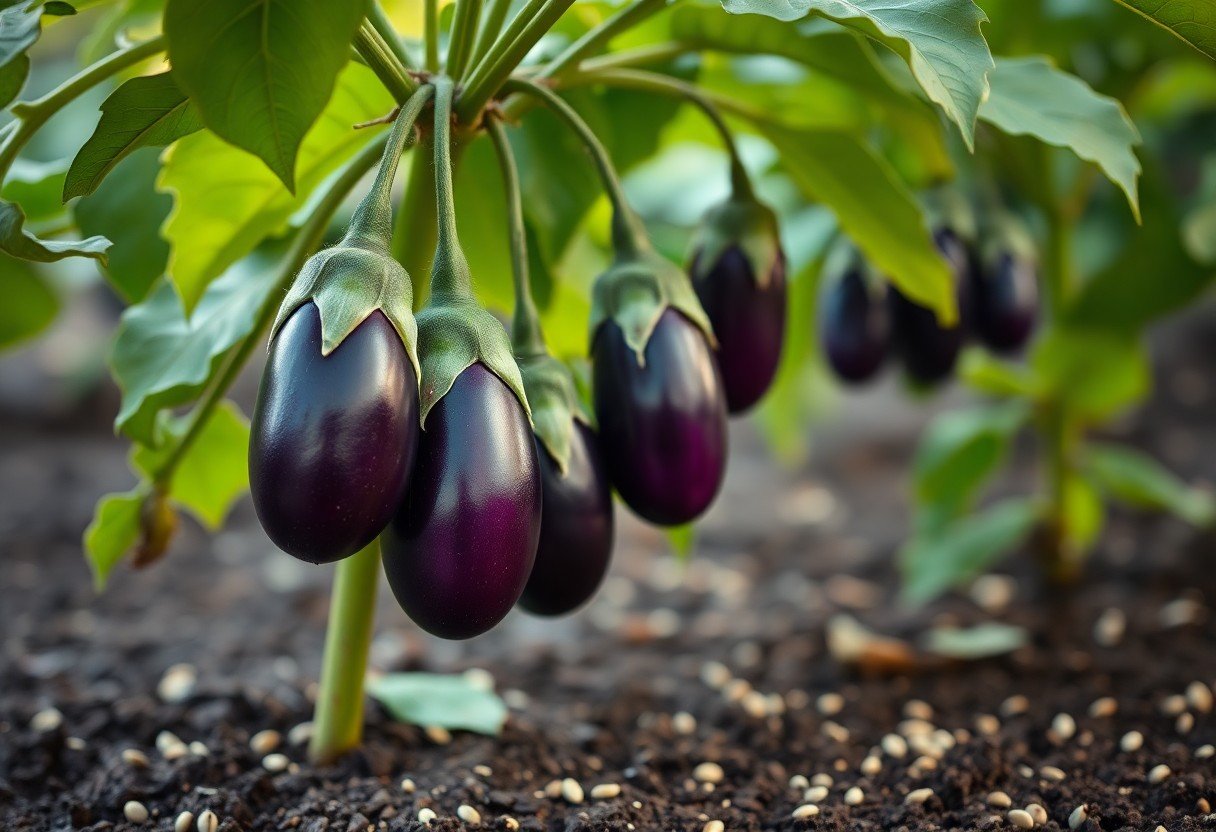
Pros and Cons of Growing Eggplants
Many gardeners are drawn to growing eggplants for their vibrant color and versatility, but it’s important to weigh both the advantages and disadvantages before you start. Below is a breakdown of key pros and cons to help you make an informed decision.
| Pros | Cons |
|---|---|
| Rich in antioxidants and vitamins | Requires warm temperatures to thrive |
| Highly versatile in cooking | Can be prone to pests and diseases |
| Attractive fruits that enhance garden aesthetics | Long growing season can be a challenge |
| Variety of cultivars available to suit your taste | Needs consistent watering and care |
| Can be grown in containers if space is limited | May require staking for support |
Benefits of Home Gardening
For you, begining on the journey of home gardening can be incredibly rewarding. Growing your own eggplants means you have direct access to fresh produce at its peak flavor. This not only enhances your meals but also contributes to a healthier diet, as you can choose when to harvest and how to grow them. Additionally, cultivating your own garden can bring joy and satisfaction, offering a therapeutic escape from daily life.
Furthermore, growing eggplants at home can save you money in the long run. By producing your own vegetables, you reduce grocery bills and ensure that you have a constant supply of this nutritious food. The joy of biting into a freshly harvested eggplant, knowing you nurtured it from seed to fruit, is a fulfilling experience that enhances your connection to nature and your food.
Challenges and Considerations
Home gardening, while rewarding, does come with its set of challenges. Eggplants specifically require a warm growing environment, which may be a limitation in cooler climates. You’ll need to pay close attention to their growing conditions, including temperature, watering, and soil quality, to ensure they flourish. Pests such as aphids and beetles can also threaten your plants, requiring vigilance and potentially organic pest control methods.
Growing eggplants involves careful management of time and resources. Ensuring adequate sunlight and fertilization contributes significantly to the health of your plants, and if you lack experience, it may take some trial and error to perfect your technique. It’s important to stay informed about best practices for growing eggplants to mitigate these challenges and foster a thriving garden.
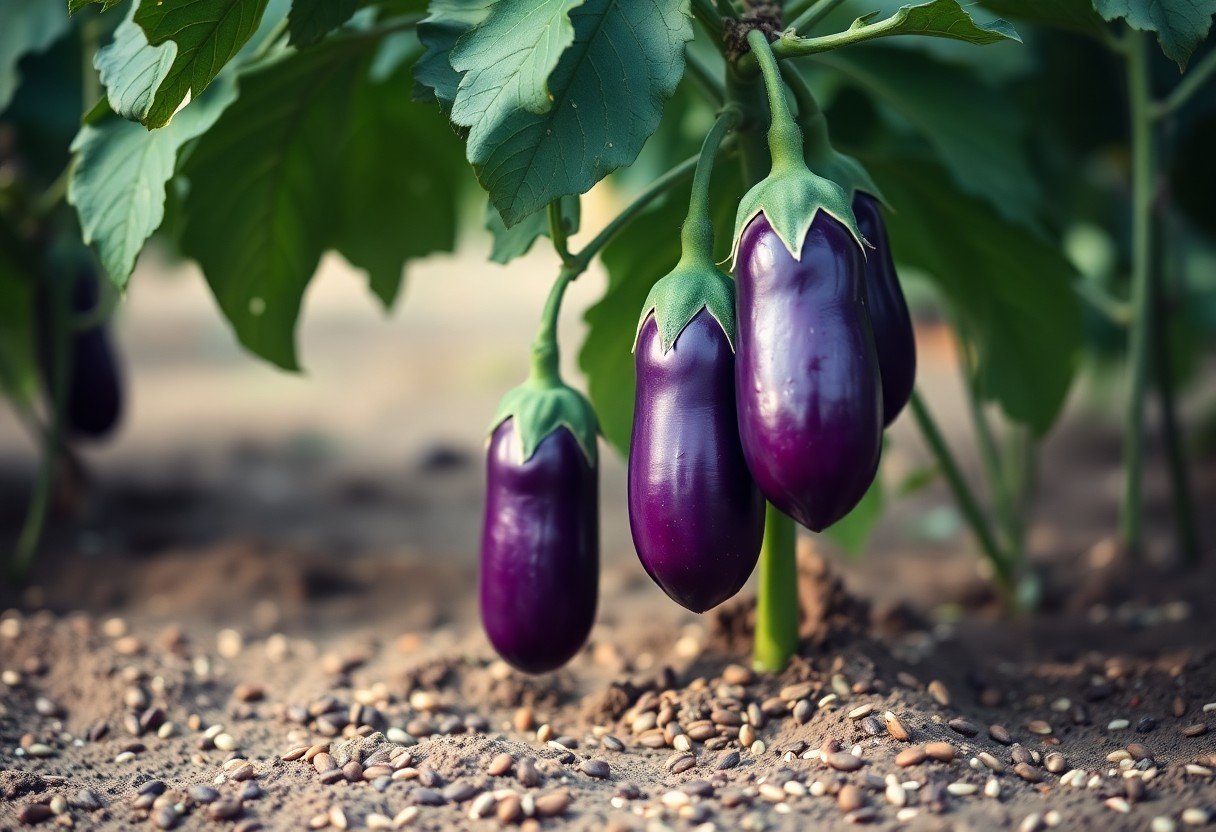
Harvesting Techniques
When to Harvest
Harvesting eggplants at the right time is vital for ensuring that you enjoy the best flavor and texture. Look for your eggplants to reach a glossy skin and a firm texture to signify that they are ready for picking. Typically, you should aim to harvest eggplants when they are about 6 to 8 inches long, which is the ideal size for most varieties. Also, keep an eye on the color; vibrant purple, white, or green hues, depending on the variety, indicate ripeness. If the skin is dull or the fruit has developed seeds that are dark and hard, it’s best to pass on them, as they may have overripe flavors.
Best Practices for Picking
Picking your eggplants properly can help prolong their freshness and prevent damage. To harvest, use a sharp pair of garden shears or scissors to cut the stem about an inch above the fruit, being careful not to bruise or damage the plant. Gently twist the eggplant as you cut to ensure a clean separation from the stem. Avoid pulling or yanking, as this can stress the plant and affect future yields.
When handling your harvested eggplants, make sure to place them in a basket or container that provides enough space to avoid overcrowding. This will help prevent bruising and maintain the quality of your fruits. It’s also advisable to harvest in the morning when temperatures are cooler, as this can help preserve the fruits and maintain their firmness. Following these best practices not only enhances the freshness and quality of your eggplants but also encourages continued growth on the plant for future harvests.
Conclusion
Presently, as you begin on your journey of growing eggplants from seed to harvest, you possess the tools and knowledge necessary to cultivate this rewarding vegetable. With proper care and attention to detail, you can ensure not only a successful growth process but also a bountiful yield of vibrant, tasty fruits. Setting the right conditions—such as adequate sunlight, watering practices, and pest management—will help you overcome common challenges and promote the overall health of your plants.
As you continue to explore the various aspects of eggplant cultivation, including selection of varieties and cooking techniques, you will find that your confidence in gardening will flourish. Your efforts will yield not only delicious fruits, but will also foster a deeper connection to the food you grow. Embrace the rewarding experience of nurturing eggplants and indulge in the delightful flavors they bring to your table.
